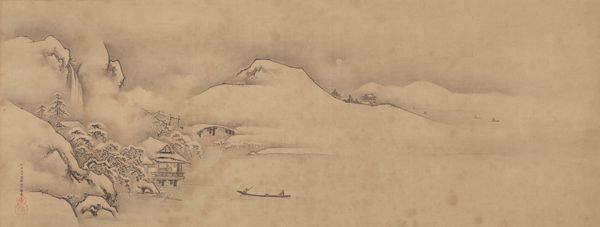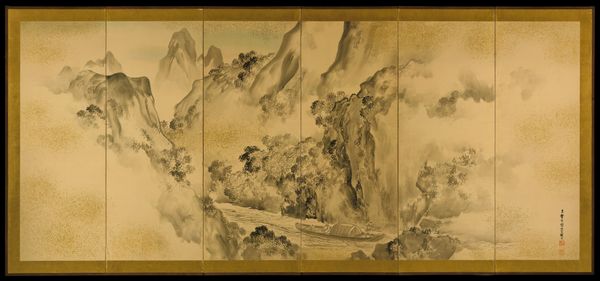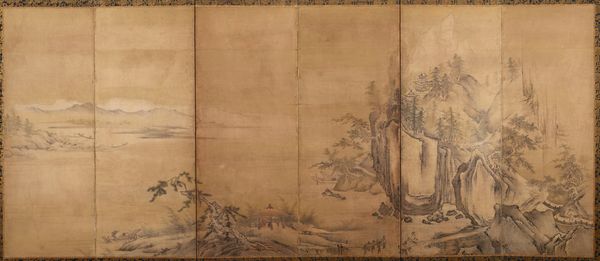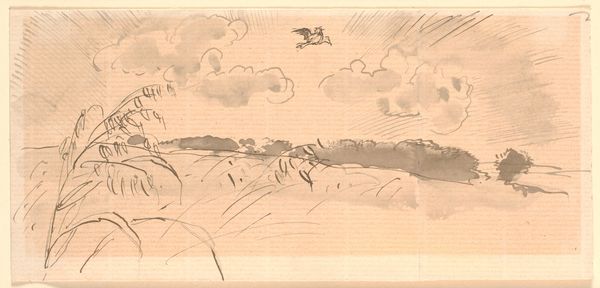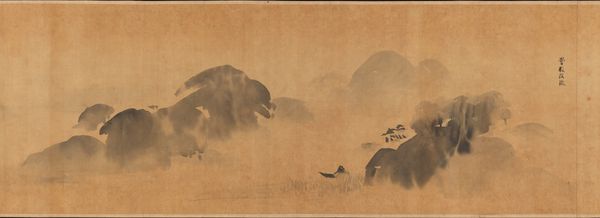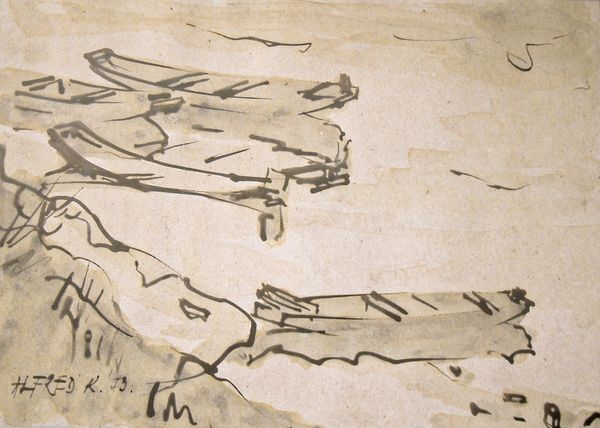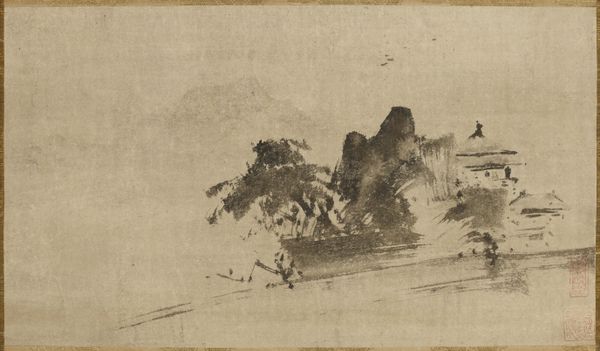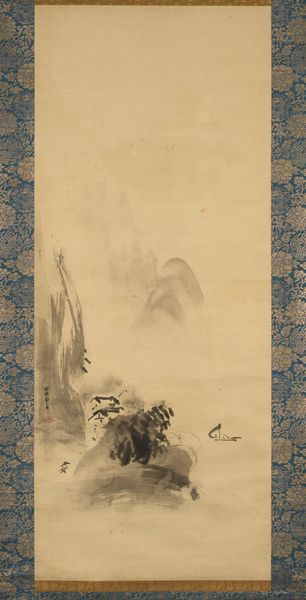
drawing, ink
#
drawing
#
water colours
#
asian-art
#
landscape
#
ink
#
orientalism
Dimensions: Image: 12 7/16 × 19 3/16 in. (31.6 × 48.8 cm) Overall with mounting: 49 7/16 × 25 3/16 in. (125.5 × 63.9 cm) Overall with knobs: 49 7/16 × 27 1/16 in. (125.5 × 68.8 cm)
Copyright: Public Domain
Curator: Let's take a moment to observe "Misty Landscape," a drawing rendered in ink and watercolours attributed to the Kano School. It likely dates between 1800 and 1833. Editor: Whoa. I get an immediate sensation of… tranquility. Like the world's holding its breath. It’s so muted; I can almost feel the dampness in the air, see my breath fogging. There’s such delicate balance with those darker foreground elements holding back the emptiness of the rest. Curator: The Kano School's influence is prominent here, blending Chinese landscape painting traditions with a Japanese aesthetic. They often enjoyed commissions from the elite and were deeply entwined in projecting power and status. I wonder, did this painting grace a Samurai home? How did that inform its purpose and viewing? Editor: A samurai home… Hmm, interesting! This feels very inward looking for an artist employed by people associated with action, movement, aggression even. Looking closer, there’s a tiny boat floating way off. Maybe it symbolizes a path to oneself or… escaping. Do you think I’m overreaching? Curator: Not necessarily. Although its reception depends on socio-political status of the viewers. Did they perceive this landscape as a reflection of their own cultivated sensibilities and authority? Was art consumed by the elite to enforce status? These paintings reinforced their access to cultural capital. Editor: See, now I'm picturing some stressed samurai, taking refuge from courtly chaos or intense training by contemplating this scene… finding freedom within it. It really is more like a mood than a picture, I reckon. Curator: That is precisely why this image speaks across generations, allowing each of us to explore their own context. "Misty Landscape" serves as a portal for reflection. Editor: Absolutely! You've provided some much needed framework around the artist and his society, and now the piece feels whole, yet still inviting for us to project into it. Thanks.
Comments
No comments
Be the first to comment and join the conversation on the ultimate creative platform.
